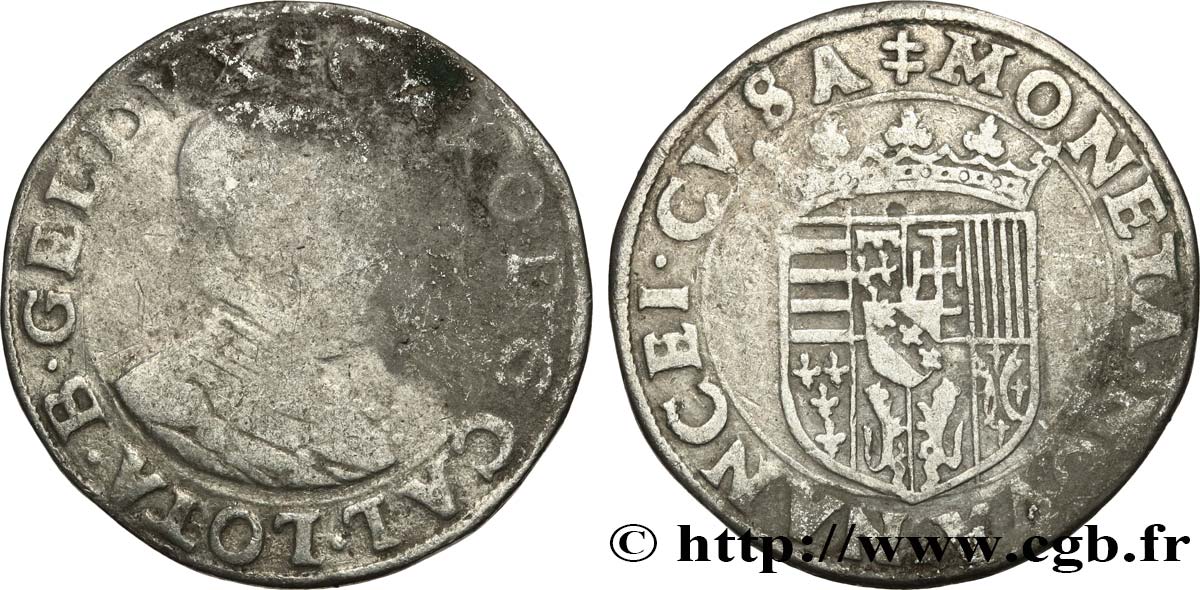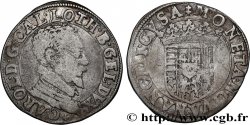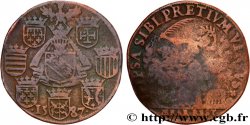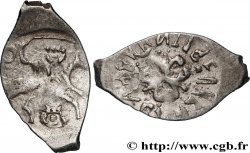正面
正面的文字 (CROIX DE LORRAINE) CARO: D: G: CAL: LOTAR: B: GEL: DVX.
正面的说明书 Buste barbu de Charles III cuirassé, la tête nue à droite, avec le petit col fraisé.
正面的翻译 (Charles, par la grâce de Dieu, duc de Calabre, Lorraine, Bar et Gueldre).
背面
背面的文字 (CROIX DE LORRAINE) MONETA. NOVA (MM) NANCEI. CVSA.
背面的说明书 Écu couronné écartelé, au 1 mi-parti de Hongrie et de Naples (Anjou-Sicile), au 2 mi-parti de Jérusalem et d'Aragon, au 3 mi-parti d'Anjou et de Gueldre, au 4 de Flandre et de Bar, brochant sur le tout un écu de Lorraine.
背面的翻译 (Monnaie nouvelle frappée à Nancy).
历史细节
DUCHY OF LORRAINE - CHARLES III THE GREAT DUKE
(1545-1608)
Charles III (1543-1608) is the son of François Ier (1544 -1545) and Christine of Denmark, the niece of Charles V. He was born in Nancy on February 18, 1543 and died there on May 14, 1608. Succeeding his father on June 12, 1545 under the regency of his mother, he was declared of age in 1555 and married Claude de France, the daughter of Henri II, in 1560. He tried to maintain strict neutrality between France and the Empire. Deeply Catholic, he fought fiercely against Protestantism. With the accession of François II and Marie Stuart, Guise by his mother, Charles enjoys a great credit at the court of France which is maintained under Charles IX. He founded the academy of Pont-à-Mousson and decided that the year would begin on January 1 from 1580. He embellished Nancy. From 1584, he joined the Holy League in order to overthrow his brother-in-law Henri III by helping and financing his cousin the Duke of Guise. After the death of Guise, then Henri III, he supported the Duke of Mayenne and signed peace with Henri IV in 1595. Henri, son of Charles, married Catherine de Bourbon, sister of Henri IV, in 1598. Charles died in 1608 in a peaceful Lorraine.










 对产品描述纠错
对产品描述纠错 打印
打印 分享我的选择
分享我的选择 提问
提问 Consign / sell
Consign / sell
 产品介绍
产品介绍















